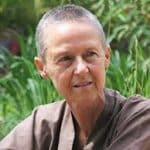Zazen for anyone anywhere
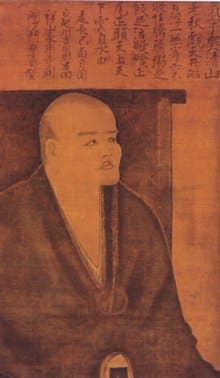
From the beginning the Way is universal and complete, so why do we distinguish between practice and enlightenment? The Dharma-vehicle is naturally present of itself, freely already here. So why do we need to make an effort to realize it? As the whole body of reality is beyond the dust of illusion, who is the one that believes we need to sweep this dust away? Never separate, it is always right where you are, so what is the use of practising this and that?
If there is a hair’s breadth discrepancy, the Way is as distant as heaven is from earth. If the slightest like or dislike arises, the Buddha mind slips out of sight through confusion. For example, when you are proud of your understanding, or think you are greatly enlightened, or have acquired wisdom and abilities, or mastered the Way and clarified what you are, or have grasped the will to storm heaven – you have made a head-start but the vital way of freeing the body is almost lost.
Shakyamuni had great wisdom at birth and we still see clearly the imprint of his sitting upright for six years. Bodhidharma transmitted the Buddha mind- seal and his nine years sitting facing a wall still echoes today. As the sages of ancient times were so dedicated, how can trainees of the present day possibly dispense with such effort?
Therefore, rest from following words and narratives, and learn the backward step of turning the light within, illuminating the Mind. When you do so, body and mind will drop away naturally and your original countenance will manifest. If you want to realize the matter of this, devote attention to the matter of this at once. Explore zazen in a quiet room and eat and drink moderately. Let all involvements and all activity come to rest. Do not think in terms of good or bad, or judge in terms of right or wrong. Cease the grinding of volition, intellect and discrimination. Stop the gauging of thoughts and views. Do not try to become Buddha. This inquiry does not depend whatsoever on sitting or lying down.
Place a thick mat at your usual sitting place with a round sitting-cushion on top of it. Sit in either the full lotus position or in the half lotus position. For the full lotus position, place first your right foot on your left thigh and then your left foot on your right thigh. For the half lotus position, just rest the left foot on top of the right thigh. Wear your clothing loose around the waist and arrange it neatly. Then rest the right hand on the left foot and the left hand on the right palm, the tips of the thumbs supporting each other.
Sit upright, without leaning to the left or right, backward or forward. Let the ears be in line with the shoulders and the nose in line with the navel. Let lips and teeth close, with the tongue held against the palate behind the top teeth. Keep the eyes open and breathe gently through the nose. When the body is settled, breathe in and exhale fully and sway the body left and right. Then sit immovably in original stillness. Think the fundamental ‘thought’, which is not thinking. How? When thought arises, do not get involved with it; let the mind dwell in the depth beyond thought. This is the very basis of zazen.
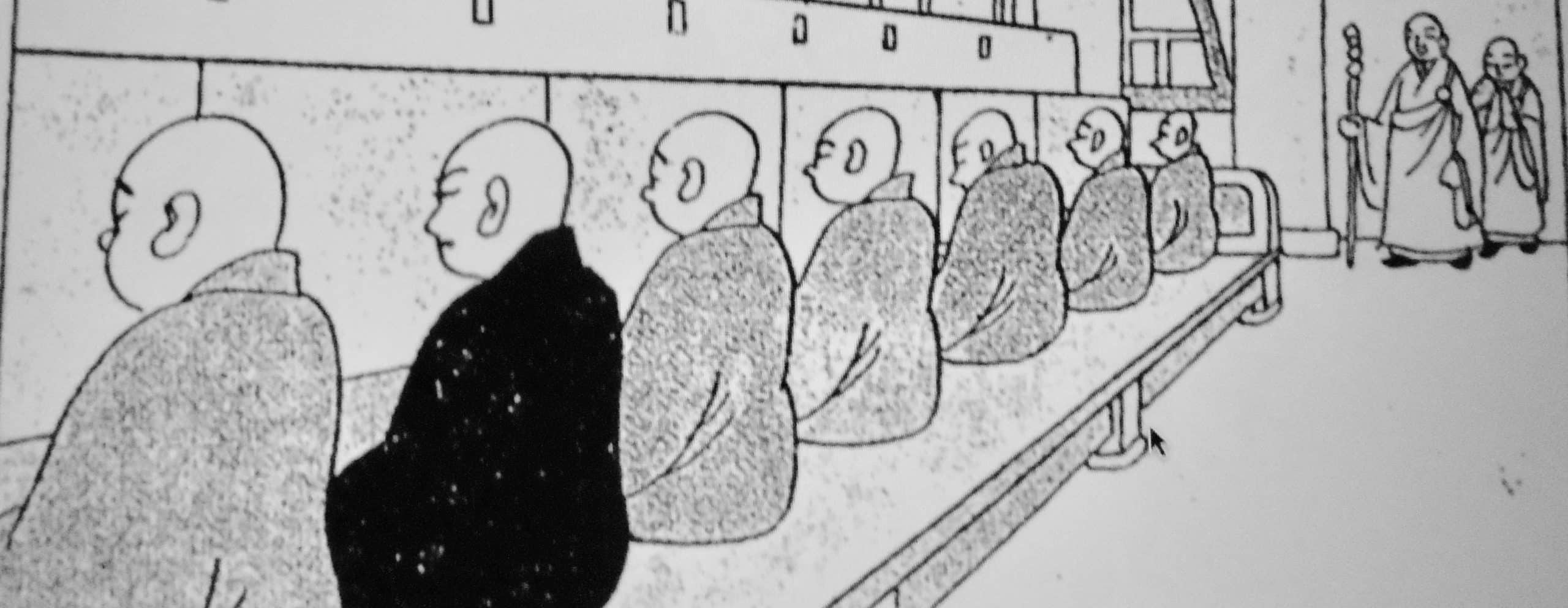
This zazen is not learning concentrated meditation. It is simply the Dharma-gate of peace and joy, the realisation in practice of enlightened wisdom. The universal is revealed through the particular without means. Once you grasp this, you are like a dragon disporting in water or like a tiger reposing on a mountain. You naturally know that the true Dharma manifests of itself and that darkness and confusion have already been cut down.
When you arise from meditation, move slowly and get up calmly; don’t move abruptly. It is clear that the ability to transcend the profane as well as the sacred, or to cast off body and mind while sitting or standing, is entirely due to the efficacy of zazen. Also, the discriminating mind cannot understand how a shift in perspective can come with a gesture or an occurrence; or how an unexpected sight or sound can catalyze realization. With accomplished supernatural powers one cannot grasp this either. Such noble presence is not bound to form or colour, how could its pathway possibly not precede perception and conception. It therefore does not matter whether you are intelligent or not; it does not work differently for the sharp- or for the dull-witted. Making a wholehearted effort is in itself practising the Way. Practice has naturally the purity of enlightenment and enlightenment will increasingly penetrate your everyday life.
The fundamental Buddha mind universally pervades both this and other worlds, India and China, East and West. Everywhere the way of practice of this school is equally available to everyone, as it is simply sitting immovably in original stillness with one’s whole being. Although there are many different ways to approach the Truth, to verify it you cannot dispense with the earnest inquiry of zazen. Why roam through dusty realms of other lands, forsaking your own sitting place? One wrong step and you are immediately off track. You already have the crucial opportunity a human body brings.
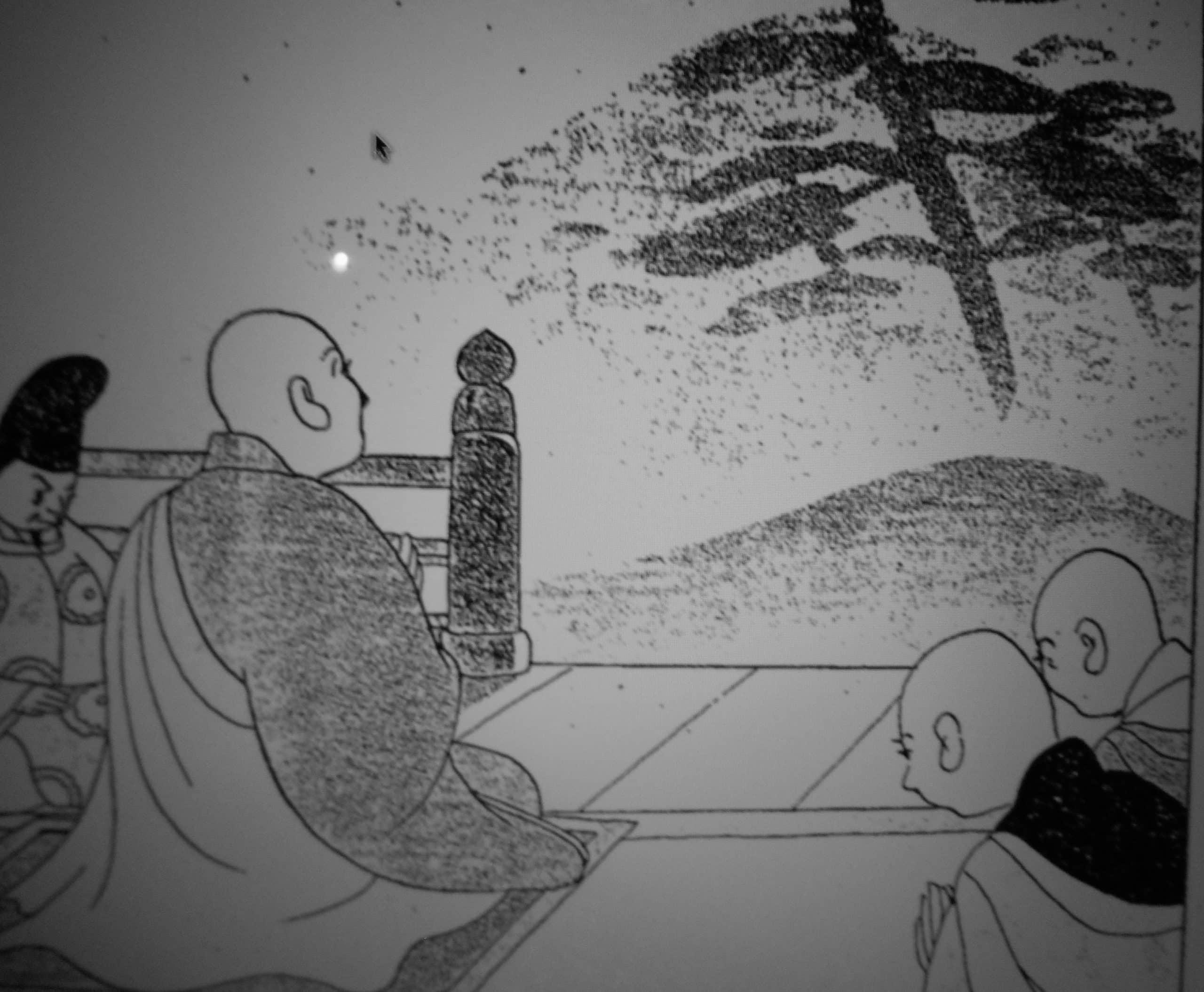
Do not use your time in vain but guard the essence of the Buddha way. Who could be satisfied with fleeting pleasures? This human form is as short-lived as dew on the grass. Like a flash of lightning this life comes and goes in a moment, gone as if it had never been.
Dedicated practitioners, do not get so used to partial reality and to seeming appearances, that reality ends up scaring you. Devote yourself to the upright, direct way. Respect those who have severed the ties of knowledge and live free of goals and intent. Harmonize with the Buddha’s enlightened wisdom; receive the ancestors’ transmission of samadhi. When you practise this continually, you are surely becoming this; the store of treasure will then open naturally and you will be able to receive and use it, according with and fulfilling the true wish.
Explanation:
Zazen is the central pillar of Soto-Zen practice and is more than that. Literally Zazen means seated meditation. It can also mean meditation on sitting. Who or what is sitting? Zazen can be practiced by anyone who feels called to do so, wherever they may be. It is sitting aware, still and upright. It is not still and aware by pushing away the world but it is still and aware querying the world as it arises. This means to meet existence with a question. What is it?
From the beginning the Way is universal and complete, so why do we distinguish between practice and enlightenment?
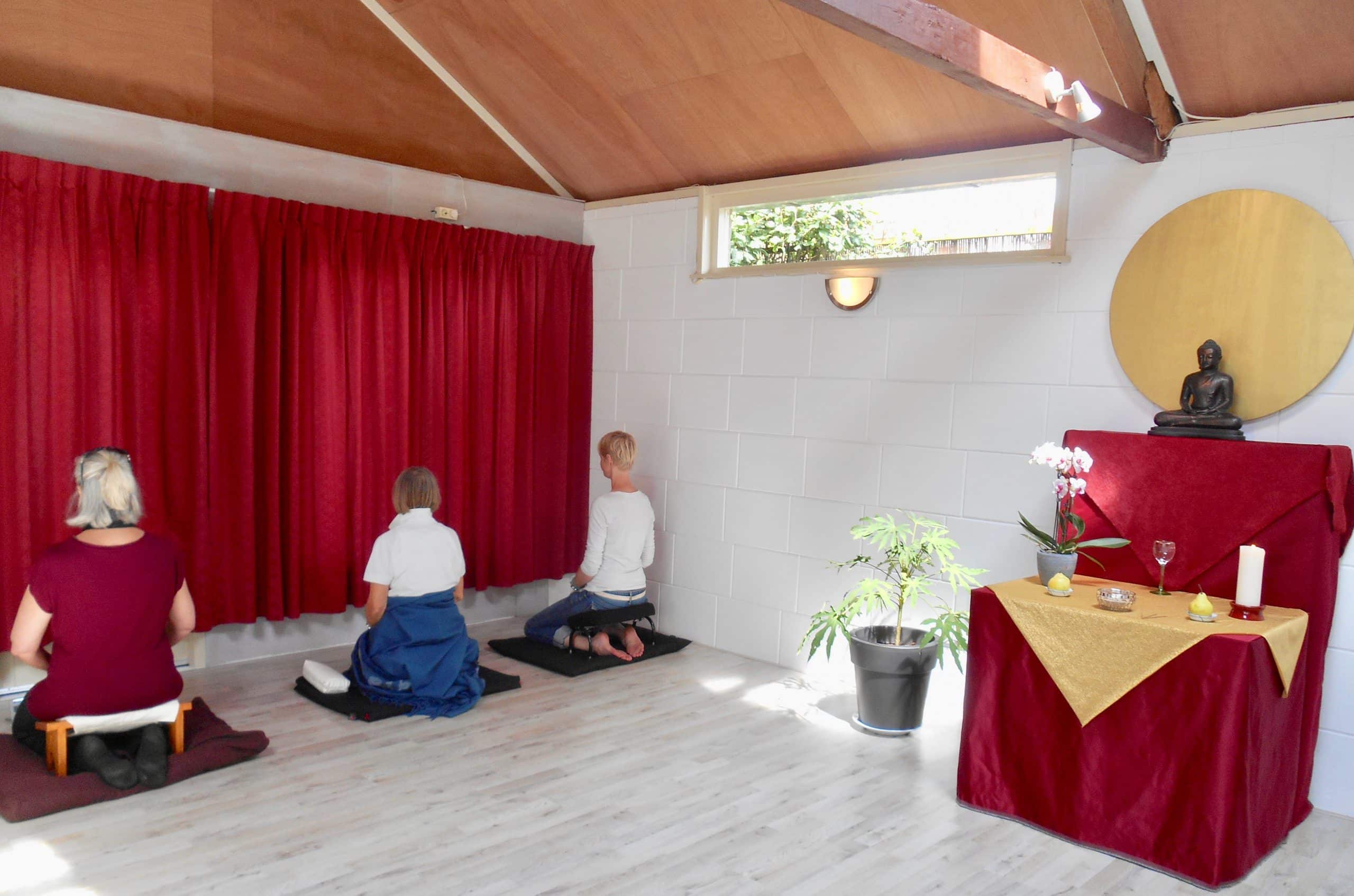
The beginning of what? The only real beginning is the first awareness. In terms of our personal history, it started in the womb and is still present at death. In terms of general history, when was there ever no awareness? In reality it is always now.
The Way is the way to walk, the way to practise, the way to be. The way from A to B, from samsara to nirvana, is the way of practice, which acknowledges enlightenment as a goal. We, who practise, have a sense of direction. Here we assume that enlightenment and practice are not identical. However, the way of being is not just ahead of us, it is present now, and it is complete, allowing anything to be as it is. Present everywhere, with infinite potential, it is never lacking.
So, why do we distinguish between practice and enlightenment? If practice and enlightenment are really different, when does my practice ever become enlightenment? If they were the same, why would we look for something called enlightenment? What need would there be to practise in order to live with wisdom and compassion? It is important to keep these questions in mind, as they are pointing to the answer.
The Dharma-vehicle is naturally present of itself, freely already here. So why do we need to make an effort to realize it?
What is the Dharma? We know the Dharma as one of the three refuges: I take refuge in the Dharma, in the Teaching; also: I take refuge in the Truth. Dharma without the capital simply means: thing, phenomena. Anything that appears in our mind is a dharma, and as such it manifests the Dharma, the Truth. “All things teach” really means that everything does – it is not just a moral platitude that makes us put up with difficulties.
A vehicle is a means of communication and a means of transport. A self-powered means of transport. A Dharma-vehicle is a truth-communicator, a truth-transport; anything in life is a truth-transport. This vehicle exists everywhere, it is naturally present of itself. It is here. Where? Here. Freely already here. Now, why do we need to make an effort to realize it if it is freely already here? What happens if we don’t make an effort? Can we see it? So what is the effort that we need to make? Look. Listen. Be present, be awake.

As the whole body of reality is beyond the dust of illusion, who is the one that believes we need to sweep this dust away?
The whole body of reality is faultless, just as it is. Nothing that appears in this universe is dust. I may not see it that way and think that all kind of things exist that should not be. Reality however allows them space. Who is the one that does not? Who is the one that believes there is dust and that wants to sweep dust away?
Never separate, it is always right where you are, so what is the use of practising this and that?
The Truth is never elsewhere. The Way is always here. It is you. Why practise things with body and mind to find it? Do we need to walk or stand in a special way, read or study or do certain things with our mind in order to find it? No. But can we do without practice? No.
With this first paragraph Dogen carries you into the depth of his questions. Hold them in your body-and-mind.
If there is a hair’s breadth discrepancy, the Way is as distant as heaven is from earth. If the slightest like or dislike arises, the Buddha mind slips out of sight through confusion.
The Way is right where I am. If I accept this fully, this being where I am as I am, the Way is manifest, but if I am not right where I am, if my mind is elsewhere, if I am fighting conditions, if I have strong ideas or opinions about persons or circumstances, or simply don’t see clearly how things are because I hope that things will be as I like them to be, then there is a “hair’s breadth discrepancy”, then like and dislike are present and in control. The Way, the Buddha mind then “slips out of sight” and awareness of things as they are is obscured. When you notice you are holding on to things or push them away, you may also sense a contraction of the muscles and twitching of the nerves of your brain and body. Then return to this moment and ground yourself where you are, and let resistance go. Do not get involved, do not resist. Dogen then goes on, addressing students who have already done some practice and think they have accomplished something:
For example, when you are proud of your understanding, or think you are greatly enlightened, or have acquired wisdom and abilities, or mastered the Way and clarified what you are, or have grasped the will to storm heaven – you have made a head-start but the vital way of freeing the body is almost lost.
You made a “head-start”, roaming in the realm of the head, of thought and intent. We can let body and mind function without adding anything to the condition of the moment; we do not need to take anything away either. We can let the body function without the contractions of muscles and twitching of nerves, that happens when we hold on or defend. Then our energy flows freely. It takes time to unlock our energy at the level of the body.
Shakyamuni had great wisdom at birth and we still see clearly the imprint of his sitting upright for six years. Bodhidharma transmitted the Buddha mind- seal and his nine years sitting facing a wall still echoes today. As the sages of ancient times were so dedicated, how can trainees of the present day possibly dispense with such effort?
We can see this imprint just where we are sitting, just where our eyes rest. We can hear the echo of Bodhidharma’s transmission and his nine years of sitting – just by listening deeply to life. Dogen does not speak of their fame, of their influence – probably things he also meant – but he speaks of it very directly, because we can hear the call very directly and see the Buddha here and now directly. These sages were very dedicated. Dedication with patience, devotion, is required. No enlightenment in twenty-one days, as advertised in some magazines! The Dharma-vehicle is freely present and we cannot dispense with great effort – so what effort?
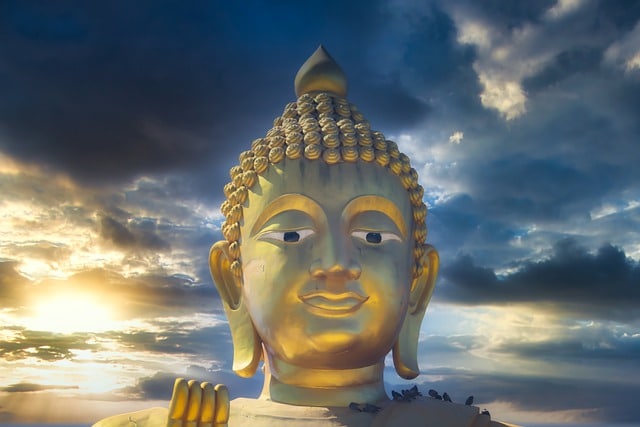
Therefore, rest from following words and narratives, and learn the backward step of turning the light within, illuminating the Mind. When you do so, body and mind will drop away naturally and your original countenance will manifest.
This is the basic instruction for zazen. Don’t get entangled in the stories, the movies, the theories; don’t follow threads into thinking – into thinking – into thinking. Notice that you are thinking, do not get involved in the thoughts’ contents, do not get carried away in explanation, justification, analysis; just return to being here, now. That is taking a backwards step, turning the light within; you illuminate what mind is. When we illuminate the mind, we see all kind of elements come and go and we also see mind itself. Body and mind will drop away – all what we think we are, all our ideas about existence, ourselves and the world around us, drop, if you let them. And together with those thoughts, the contractions of our organs, of our body, will get released. This is a natural process. I cannot accelerate it by my will. I can by my acceptance and non-interference, by letting be. Then what you originally are, your naked self, will show itself.
If you want to realize the matter of this, devote attention to the matter of this at once.
The matter of this? The matter of what? Dogen conveys his meaning here very skillfully. The word ‘this’ means being this way, and also what way? To find the this, we need to hold the what. We need to keep the question alive. Sometimes it is clearly this, our original countenance; it is this, as it is. throughout our life of training this clarifies through what? No this is recognized without a what.
Explore zazen in a quiet room and eat and drink moderately. Let all involvements and all activity come to rest.
This is what you are doing during this week of sesshin. No involvement with your job circumstances, no involvement with your personal relationships. They may be the background of your life but not currently in your mind. You can take refuge in this rest every day, even if only for one brief period of sitting.
Do not think in terms of good or bad, or judge in terms of right or wrong.
This we can do continuously. See the inclination to think in terms of good and bad and judge people, events and so on. This judging seems to be something we hold on to, a means of determining where the world is at, where we as individual stand. Let it go, you can stand all right and upright without ‘true’ or ‘not true’, ‘yes’ or ‘no’. These confirmations and denials make our mind swing from this to that. Better take refuge in the what, the what ensures of a centering position.
Cease the grinding of volition, intellect and discrimination. Stop the gauging of thoughts and views. Do not try to become Buddha. This inquiry does not depend whatsoever on sitting or lying down.
You can see it happen, the evaluation, the analysing of a situation, the judging of a moment – just see it happen and do not involve yourself with it. And do not try to interfere or control. Do not try to become Buddha. What is Buddha? What am I? What could I become that I not already am? It is like trying to go for a swim while you are already in the water. Am I in the water? What I, what water? Better not make assumptions. Better look and listen deeply and gently. This inquiry into what you are can take place anywhere, whatever posture your body may be in and no special circumstances are needed.
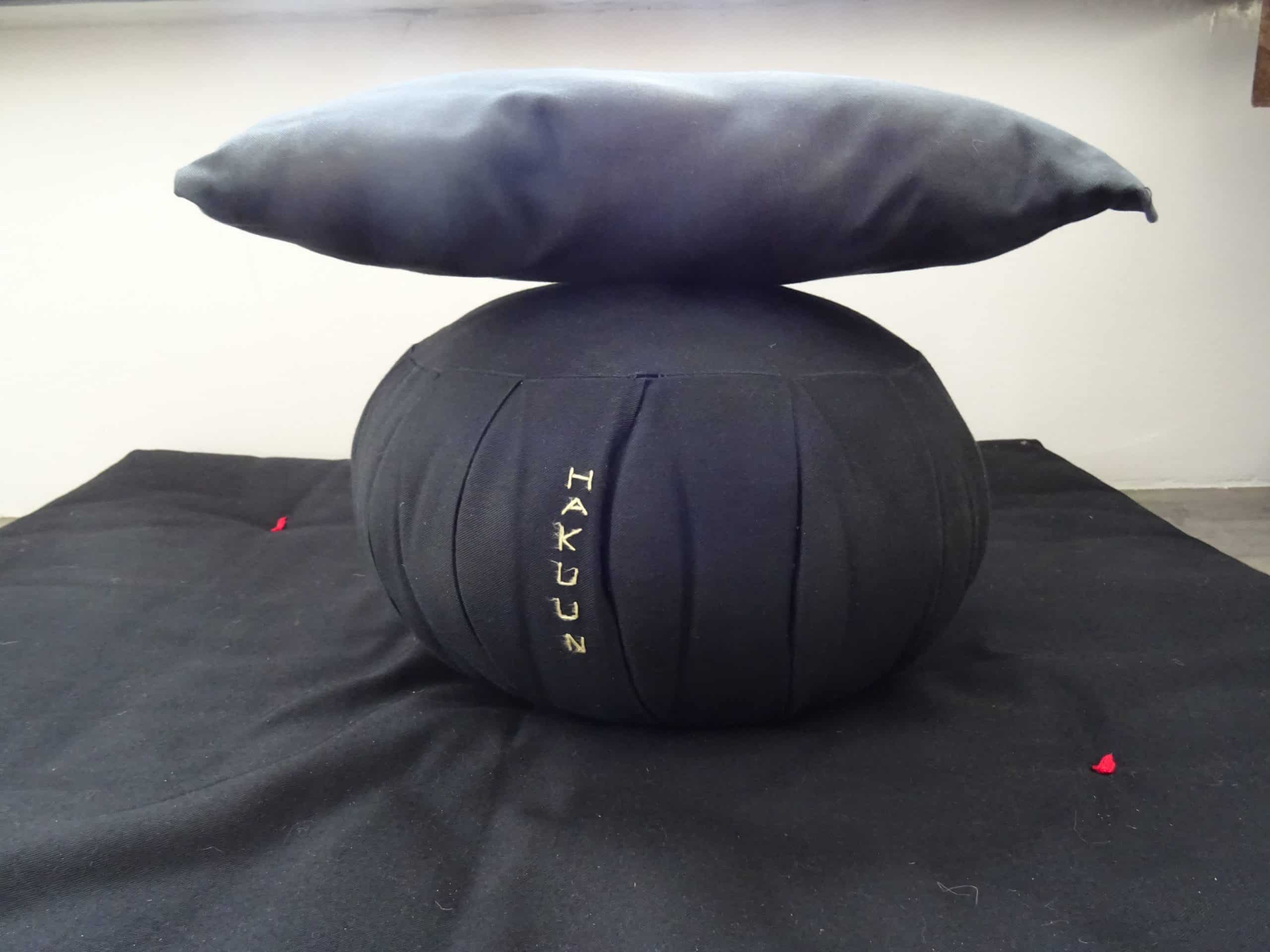
Place a thick mat at your usual sitting place with a round sitting-cushion on top of it. Sit in either the full lotus position or in the half lotus position. For the full lotus position, place first your right foot on your left thigh and then your left foot on your right thigh. For the half lotus position, just rest the left foot on top of the right thigh. Wear your clothing loose around the waist and arrange it neatly. Then rest the right hand on the left foot and the left hand on the right palm, the tips of the thumbs supporting each other.
The lotus position where the left hand and the left foot are above the right, is called the goma posture. It is widely used in Japan and China. The position where the right hand and the right foot are above the left, is called the kichijo posture and is widely used in India. The Birmese meditation posture is one leg in front of the other. We are now widely using low benches and sit in seiza, the knees bent next to each other on the mat. One can also use a chair. Then be sure to have the feet firmly planted on the floor. The important feature is sitting grounded, stable and upright.
Sit upright, without leaning to the left or right, backward or forward. Let the ears be in line with the shoulders and the nose in line with the navel. Let lips and teeth close, with the tongue held against the palate behind the top teeth. Keep the eyes open and breathe gently through the nose. When the body is settled, breathe in and exhale fully and sway the body left and right.
Be sure to not let your thumbs separate and to not let them press too firmly. The same counts for the tongue against the roof of the mouth. Also, be aware of how the jaws close, let them close with jaw-muscles relaxed. Take one to three full breathes, exhale all the way to the lower abdomen. Swaying left and right we find the right and stable position of our spine.
Then sit immovably in original stillness. Think the fundamental ‘thought’, which is not thinking. How? When thought arises, do not get involved with it; let the mind dwell in the depth beyond thought. This is the very basis of zazen.
Sit immovably in original stillness. This conveys much. Sit steady as a mountain in the pristine silence you can find on high mountain peaks, not affected by the bustling life beneath. Thinking does not need to follow the arising of thought and does not need to lead into narration. Thought arises – no need to get involved. We can take note: this thought, this feeling. When we notice we get lost in thinking, we can return to just being present in this body sitting here and now. This is not repression; it is a gentle and aware repositioning. And it may be good to take the subject of your thinking after meditation to a suitable place to think.
Dogen also says implicitly: think the fundamental ‘thought’ which is not intentionally ‘not thinking’. We sit, neither getting involved with thought, nor with no thought, so we do not resist thought. The same counts for feeling: feeling and thought are not such separate phenomena as you might think; they are entangled. They naturally arise because we are alive. One translator of Zen master Dogen’s work, Gudo Nishijima, translates the depth beyond thought where the mind rests, as a ‘concrete state’. I prefer: a concrete transparency. The above concise instruction is the very basis of zazen.
This zazen is not learning concentrated meditation. It is simply the Dharma-gate of peace and joy, the realization in practice of enlightened wisdom.
Concentration seems to still have an object, a purpose, an aim. We are not learning concentration, we are not learning to focus on something, we are not learning first this and then that, we are not after specific results. When we sit this way, we emulate and join the enlightened wisdom, which is already there. We realize what is already happening through the practice of not doing anything else.
The universal is revealed through the particular without means.
The particular is you as you are, things, as they are. This particular thing or you right here right now. Each moment of particularity, the universal is revealed without means. No need to try, to grasp for methods and means. Let go. This sentence is a crucial one; it is an explanation of the word koan. The particular problem of now ( = koan) reveals universal truth. When we look with care, we see that this seemingly limited, particular instance opens as a window into universal being. Without means. It simply happens. This simply is so. Dogen uses the words ‘nets and baskets’ for means. Nets and baskets are used to catch beings. Being cannot be caught. We do not need any nets, hooks or baskets to catch the universal. It is already freely present each instance of being, precisely as it is.
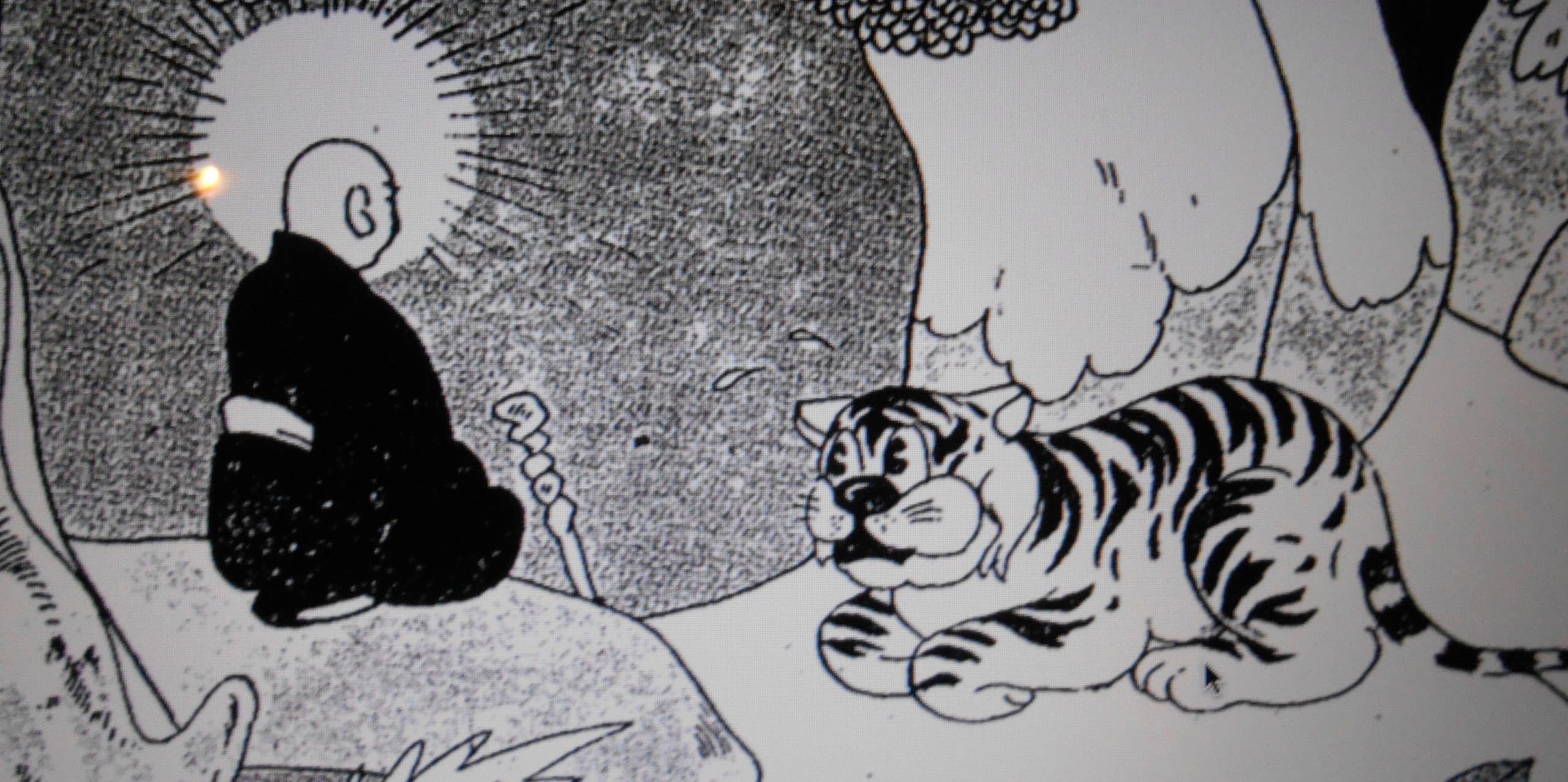
Once you grasp this, you are like a dragon disporting in water or like a tiger reposing on a mountain. You naturally know that the true Dharma manifests of itself and that darkness and confusion have already been cut down.
We can rest, knowing our true element is all around us. This is freedom and a great joy. We can entrust ourselves to life, whatever it’s koan brings. We naturally know – this knowing is inherent in our being – we already know the Truth and that it manifests of itself. So we realize there never was any darkness or confusion to begin with.
When you arise from meditation, move slowly and get up calmly; don’t move abruptly. It is clear that the ability to transcend the profane as well as the sacred, or to cast off body and mind while sitting or standing, is entirely due to the efficacy of zazen.
Both the profane and the sacred can be transcended in zazen. We can let go fully of any identification with mind or body while we sit or stand. We have heard even of some ancestors who left this life sitting in zazen or standing up.
Also, the discriminating mind cannot understand how a shift in perspective can come with a gesture or an occurrence; or how an unexpected sight or sound can catalyze realization. With accomplished supernatural powers one cannot grasp this either.
This paragraph I have shortened into its essential message. Dogen enumerates some eight examples in shorthand, which refer to the stories of the awakening of various masters. One ancestor had a change of perspective on existence when this (…) happened. Another practitioner realized his original state when that (…) happened. What the details are does not matter. Sometimes a master helped a disciple turn her mind around. Sometimes this happened due to an occurrence in nature. These occurrences are potentially present all the time, but they can only bring about a change in our perspective when we are ready.
Our discriminating mind can neither understand zazen nor the change of perspective it brings about. It cannot explain it. We cannot even perceive it with the ordinary mind. Even with supernatural powers it escapes us. Because:
Such noble presence is not bound to form or colour, how could its pathway possibly not precede perception and conception.
Dogen expresses himself strongly with a double negation, i.e. it is preceding perception and conception – It is freely already present, before we even see or think or feel or conceptualize. This noble presence cannot be defined. It is not describable or conceivable and it is vibrantly present.
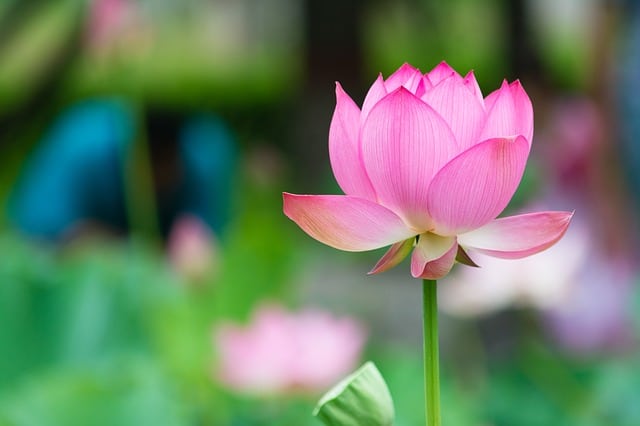
It therefore does not matter whether you are intelligent or not; it does not work differently for the sharp- or for the dull-witted.
This is good news for all, both for persons who rely on their faculties and for those who are not inclined or capable of conceptualization. The Buddha Nature is present in all, whatever their abilities. Let this encourage those who are always trying to work things out, who hold on to the cerebral, to put that down. Let this encourage those of us, who are not into reading, to trust ourselves – we have what we need already!
Making a wholehearted effort is in itself practising the Way. Practice has naturally the purity of enlightenment and enlightenment will increasingly penetrate your everyday life.
The Way lacks nothing. It simply needs wholehearted expression, which comes in practice. In practice the enlightened mind, which is the foundation of our being, is naturally present. The more we ‘practice’ this non-practice, the less the Way is obscured, and the more its presence can be known.
The fundamental Buddha mind universally pervades both this and other worlds, India and China, East and West. Everywhere the way of practice of this school is equally available to everyone, as it is simply sitting immovably in original stillness with one’s whole being. Although there are many different ways to approach the Truth, to verify it you cannot dispense with the earnest inquiry of zazen.
Any world, geographical or spiritual world, the world of beings, the world of objects, is pervaded by the Buddha mind. In all parts of the globe, spirituality has sprung from and has mixed with some form of sitting still. Human beings and also animals intuitively know that. The Sufi’s, Christian contemplatives, Vedanta- and Advaita-practitioners, American Indians – all practice some form of meditation on their path to Truth. Whatever time or culture we are in, we cannot dispense with the earnest exploration of zazen. Zazen naturally unifies form and formlessness, appearance and timelessness. It brings insight in and acceptance of life and death. Formless and loving it flows with any form.
Why roam through dusty realms of other lands, forsaking your own sitting place?
Other countries may look interesting, smell different, feel nice and we may think that the grass is greener there. But all we need is ‘here’. Lost in characteristics, in this or that, in distraction, we roam in the land of ‘other’, ignoring the home of the true self, our home where self and other are one life.
One wrong step and you are immediately off track.
Breaking the Precepts because of ‘want’ or ‘don’t want’, or simply wandering after pleasures, I loose track of my direction. As Dogen says in the beginning: the Buddha mind then slips out of sight through confusion.
You already have the crucial opportunity a human body brings. Do not use your time in vain but guard the essence of the Buddha way. Who could be satisfied with fleeting pleasures? This human form is as short-lived as dew on the grass. Like a flash of lightning this life comes and goes in a moment, gone as if it had never been.
Some participants of this retreat are keenly aware of the preciousness of this life. What is it good to do with my life? Do I marry? Do I become a doctor? What about monastic life? How can I best live according to my true wish? How can I keep up the commitment to my practice?
Dedicated practitioners, do not get so used to partial reality and to seeming appearances, that reality ends up scaring you.
It is easy to get trapped into thinking that we know what something is, that we know what the case at hand is about. Dogen plays here with a reference to an old story from the Buddha’s time about some blind people who were grouped around an elephant and, touching just a part of it, asked to describe what it might be. They all came out with something different: a tree (foot), a rope (tail), a snake (trunk), – all partial reality. It takes some letting go to see the whole picture, to not take what seems to be for what is. If we are stuck with our way of looking at the world, reality (literally: the dragon of reality – i.e. great awesome being) scares us.
Devote yourself to the upright, direct way.
Upright of body, upright of mind. It is direct, im-mediate.
Respect those who have severed the ties of knowledge and live free of goals and intent.
Dogen was very knowledgeable. He studied Chinese and Japanese classics from a young age. His explanation of the Dharma is not simple and easy. But he knew not to depend on this erudition, he severed the ties to it. Also, we can live free of doing ‘in order to’, to live in the present and trust what you are, trusting the fundamental being of things. Trusting this, I can, like Kanzeon, be anything: even what I am – which I often do not want to be – myself.
Harmonize with the Buddha’s enlightened wisdom; receive the ancestors’ transmission of samadhi. When you practise this continually, you are surely becoming this; the store of treasure will then open naturally and you will be able to receive and use it, according with and fulfilling the true wish.
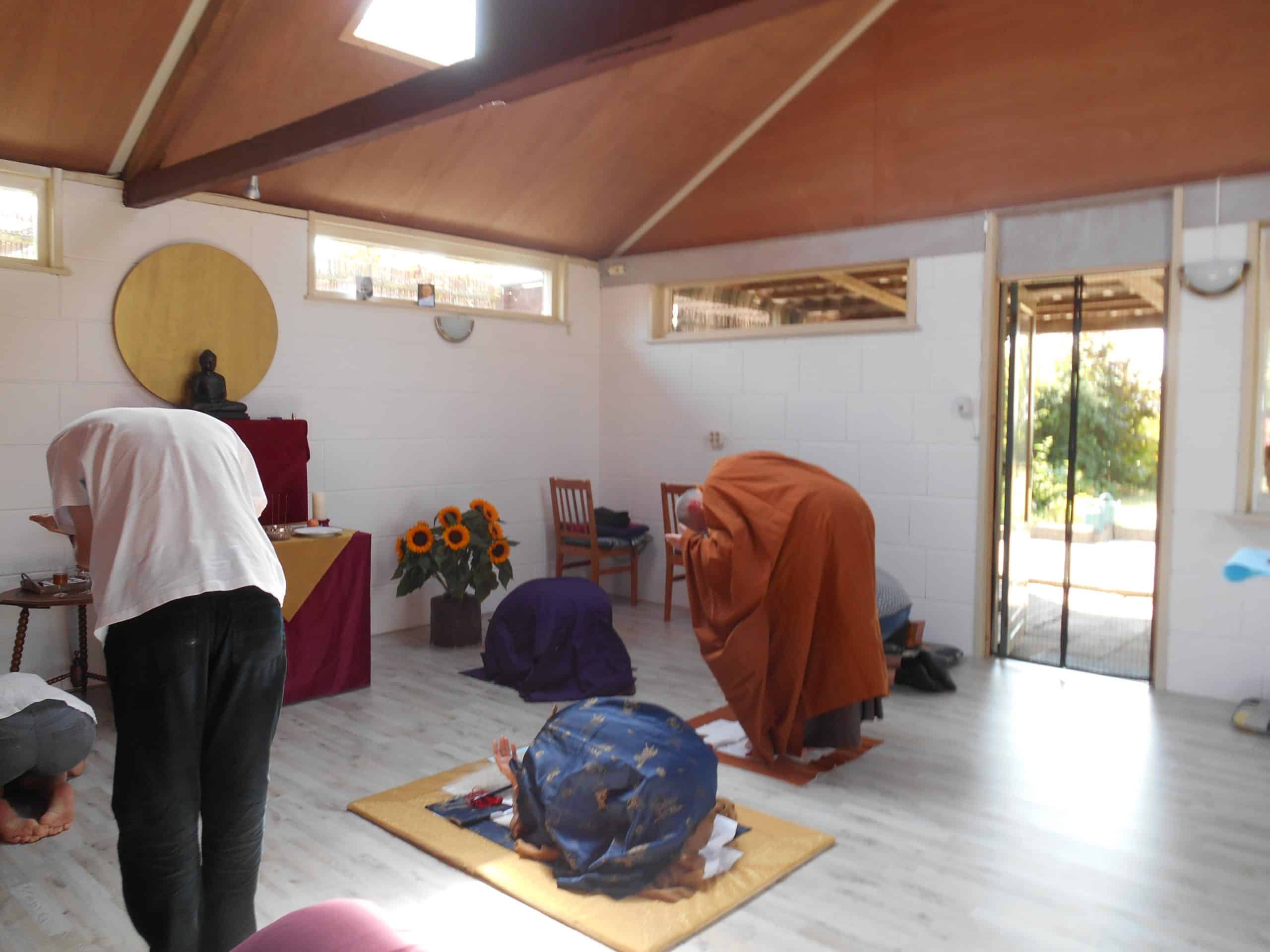
We saw that we harmonize naturally with bodhi in zazen (4). Samadhi means: being absorbed in ‘not two’, aware and one as this. You receive this from the always present, the ‘ancestors’, and from those who realized this before.
Practicing this continually, the store of treasure of compassion, love and wisdom will be ours to use so that all beings will find this also. Our being may help others; we cannot hold on to a way to help others. We cannot hold on to an ideology, however beautiful. Compassion, love and wisdom flow free of fixed forms.
Footnotes
1. The Japanese version I translated can be found in the Soto Shu Sutra book, published by the Soto Headquarters in Tokyo 1984.
2. A fuller version of this paragraph is: “Also, the discriminating mind cannot understand how a shift in perspective can happen when a finger is pointed, a flagpole is cut down, a needle is immersed in water or when a mallet strikes a wooden block; or how a flicking hossu, raised fist, thumping staff or loud shouts can bring about realization.”
3. Dogen’s use of the word koan has been debated by Japanese academics recently. See Okumara, Shohaku. Realizing Genjokoan, (Boson, Wisdom 2010) p.14 – 18. According to a commentary by a direct disciple of Dogen, Senne, Dogen’s use of the word Koan “refers both to the equality of all things (ko -) and to the uniqueness or particularity of each and every being ( – an).”
4. Bodhi in Sanskrit and Pali literally means: “awakening”, “enlightenment”. InMahayana Buddhism it came to be seen as identical with Reality or “Tathagata” i.e. literally: “come this way”.
Origineel: Fukanzazengi or Zazen for anyone anywhere
Author: Zen master Dogen (1200 – 1253), Japan


